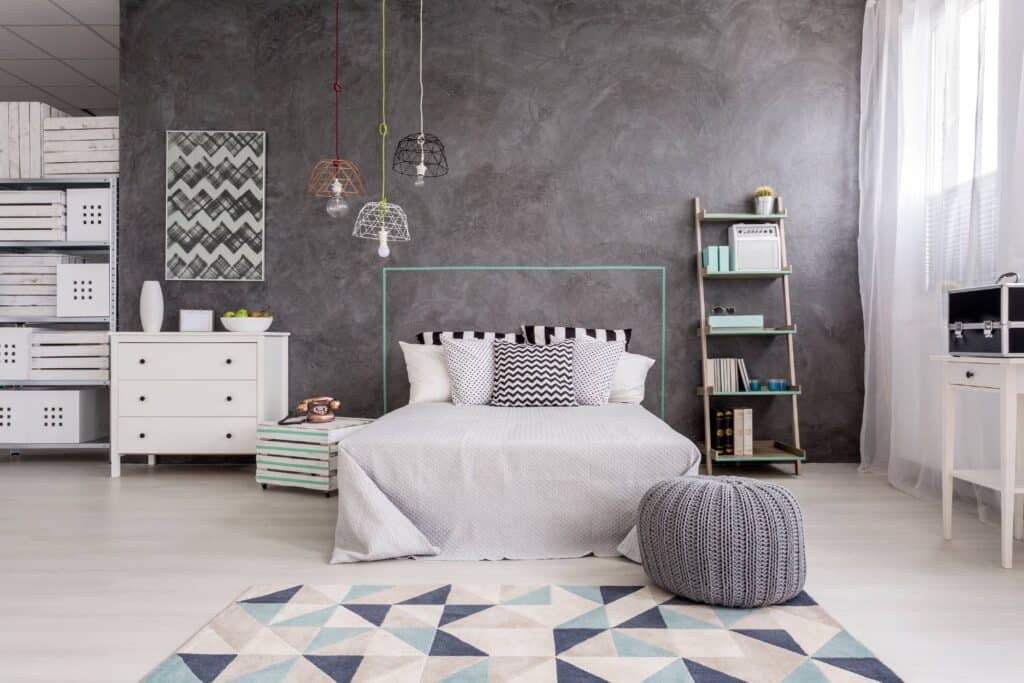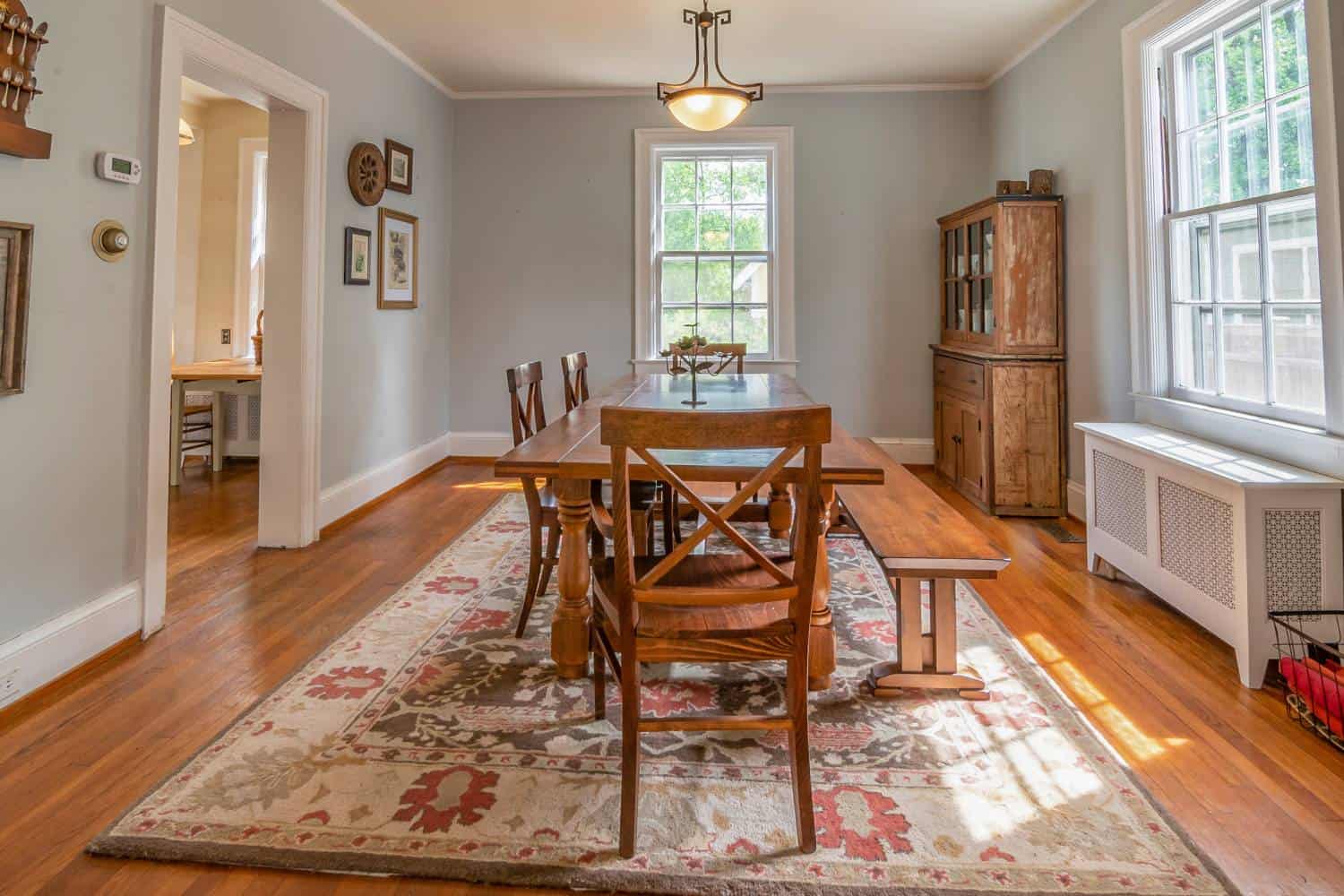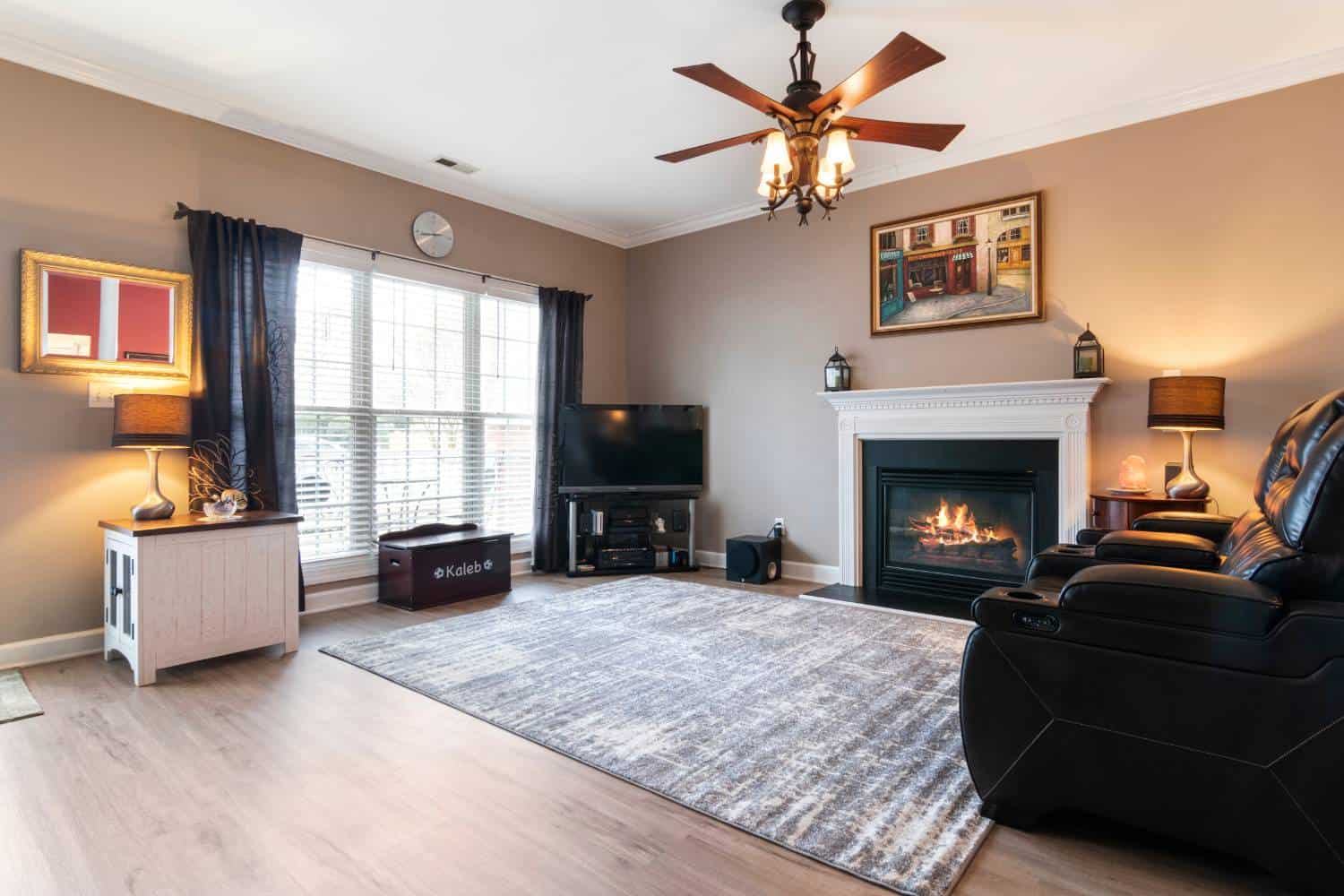Rugs are among the most versatile and stylish elements in home décor, offering both aesthetic appeal and functional benefits. They are particularly effective in defining and separating spaces, especially in open-plan homes. This article delves into using rugs to define and separate spaces, focusing on techniques, styles, and best practices.
Let's get straight to the point
Rugs are versatile and stylish additions to home décor. They are ideal for defining and separating spaces while adding warmth and texture. They act as visual anchors, particularly effective in open-plan spaces, creating distinct zones without physical barriers.
Choosing the right rug involves considering size, colour palette, and material. You must also ensure it complements your décor and furniture, such as placing it under a sofa and coffee table for a cohesive look. Rugs can be focal points with bold patterns or define areas like a dining room, living area, or cosy reading nook.
Proper placement is crucial, and layering adds depth and interest. Avoiding common mistakes like choosing the wrong size or neglecting maintenance ensures optimal results.
Using multiple rugs to delineate functional areas, thoughtfully mixing patterns, and focusing on effective positioning can enhance style and functionality, transforming your home into a well-defined, harmonious space.
Understanding the Role of Rugs in Space Definition
Rugs act as visual anchors, helping to delineate functional areas within a room. They are also key in creating distinct zones without physical barriers in open-plan spaces.
Why Use Rugs to Define Spaces?
- Create visual interest by breaking up large, open rooms.
- Add warmth and comfort underfoot.
- Establish a cohesive look while maintaining separate functions.
Whether working with an open plan or a small space, rugs allow you to define areas elegantly and effortlessly.
Choosing the Right Rug for Your Space
Selecting the right rug is crucial for achieving the desired effect.
Factors to Consider
- Size Matters: A large rug can ground a living area, while a smaller rug works better in a cozy reading nook.
- Colour Palette: Choose rugs that complement your room’s colour scheme.
- Rug Styles: From oriental rugs to striped rugs, select a design that aligns with your décor.
- Material: A durable wool rug is ideal for high-traffic areas, while softer textures suit a seating area.
Matching the rug to your furniture, such as placing it under the sofa and coffee table, helps create a cohesive look.
Using Rugs to Create Focal Points
Rugs can be a focal point in your décor, drawing attention to specific areas.
Highlighting with Bold Patterns
- A statement rug with a bold pattern can anchor a conversation area.
- Use a patterned rug in vibrant hues to add interest to neutral spaces.
Defining Different Spaces in a Home
Dining Area
A dining table over a rug defines the dining room or dining area. Opt for a round rug or area rug that extends beyond the front legs of the chairs.
Living Area
A large rug under the sofa and coffee table ties the furniture together in a living space and creates a clear boundary.
Reading Nook
A cozy reading nook can be established with a smaller rug layered with soft cushions and throws.
Rugs in Specific Rooms
Bedroom
- Use two rugs on either side of the bed for symmetry.
- A runner rug at the foot of the bed adds elegance and defines the space.
Kitchen
Place distinct rugs near the sink and stove for a mix of function and style.
Positioning a Rug in a Room
Correct placement is essential for achieving balance and functionality.
Tips for Placement
- Ensure the front legs of the furniture rest on the rug.
- Avoid placing rugs too close to walls; leave space to frame the area.
- Layering rugs adds texture and visual interest.
Tips for Effective Rug Placement
Layering for Depth
Layering rugs are an excellent way to add depth and dimension. A solid rug can be the base, with a patterned rug for contrast.
Creating Pathways
Rugs can create pathways in an open-plan space, leading the eye through different zones.
Mix Patterns Thoughtfully
When combining rugs, mix patterns with care to avoid clashing designs. Choose similar tones to maintain harmony.
Common Mistakes to Avoid
- One Rug for the Entire Room: One rug can make the space feel disconnected. Instead, use multiple rugs to define different zones.
- Wrong Size: Avoid rugs that are too small for the space.
- Ignoring Maintenance: Select rugs that suit the room's functional areas and are easy to clean.
Final Considerations
Rugs are more than just decorative elements; they’re tools to enhance and organise your living environment.
- Use rugs to define distinct areas in your home while adding texture and warmth.
- Experiment with rug styles, from oriental rugs to modern designs, to reflect your taste.
- Focus on proper placement and layering to add interest and maximise their impact.
Using rugs strategically, you can transform your home into a well-defined and aesthetically pleasing space.
Incorporating rugs is an art that blends style and functionality. With these tips, you now know how to use rugs to define and separate spaces using rugs, ensuring each area serves its purpose while contributing to your home’s overall harmony.
Frequently Asked Questions
Rugs create visual boundaries, add warmth, and enhance décor. They allow for distinct functional zones in open-plan areas without physical dividers, contributing to a cohesive and stylish home design.
Select a rug based on the area’s size, colour scheme, and function. Match the rug style and material to your décor while ensuring it complements furniture placement for a harmonious look.
Yes, multiple rugs can define different zones within the same space. Ensure the rugs complement each other through similar tones or patterns for a cohesive yet distinct layout.
Place rugs under furniture like sofas and coffee tables, ensuring the front legs rest on the rug. Leave space around edges and layer rugs for added depth and texture.
Avoid rugs that are too small, have mismatched patterns, or are placed poorly. Ensure that the rugs suit the area’s function and maintenance needs while enhancing the space’s overall aesthetic appeal.


